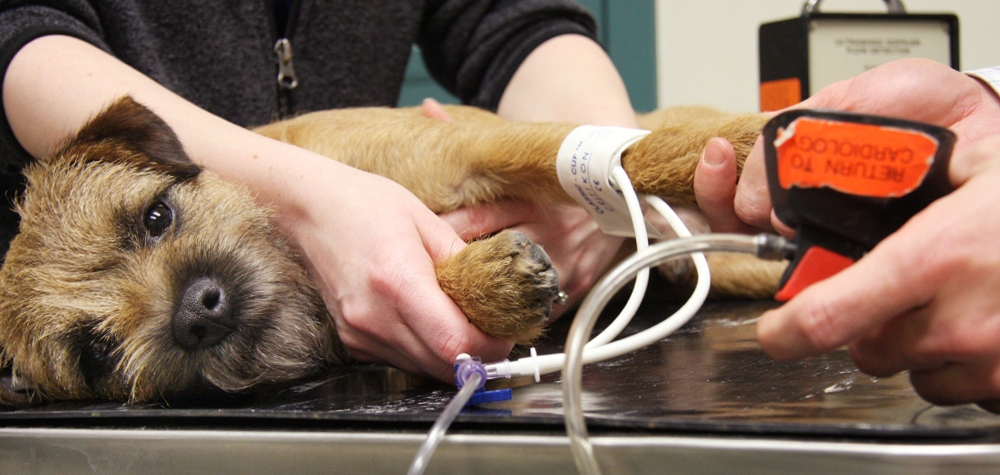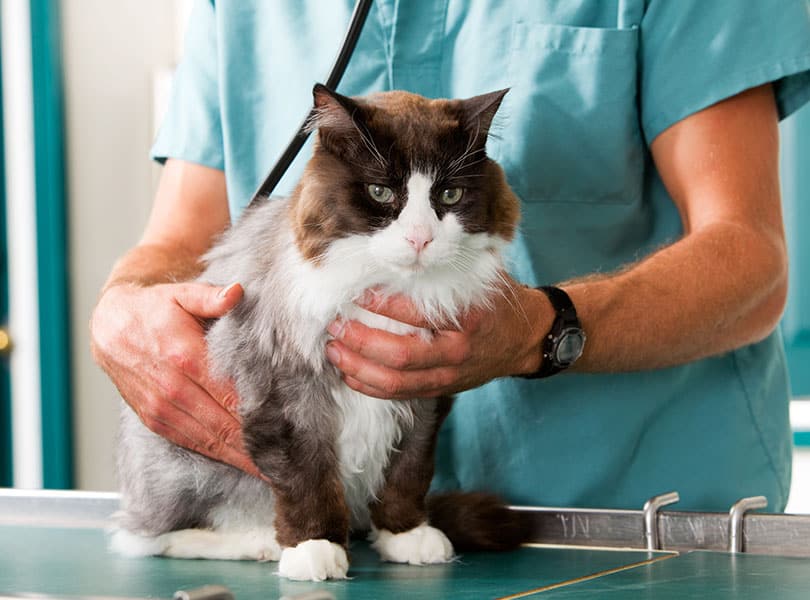Things to Know Before Visiting a Board Certified Veterinary Cardiologist}
Wiki Article
The Function of Ultrasound and CT Scan in Modern Veterinary Practices: Insights From Experienced Professionals
In contemporary vet methods, ultrasound and CT scans considerably enhance analysis capacities. These imaging methods give important understandings into animal health and wellness, guiding therapy choices. Experienced specialists identify the one-of-a-kind advantages of each technique. Ultrasound uses real-time assessments, while CT checks deliver elaborate physiological details. Comprehending their roles and applications elevates important concerns concerning their influence on individual outcomes and the future of veterinary diagnostics. What insights can be gotten from their combined use?Comprehending Ultrasound in Vet Medication
Ultrasound is a necessary analysis tool in veterinary medicine, using a non-invasive approach to picture inner frameworks. This imaging method employs high-frequency audio waves to produce real-time pictures of tissues and body organs, enabling vets to analyze problems without surgical treatment. Common applications include reviewing the heart, liver, kidneys, and reproductive body organs, in addition to checking pregnancies.The treatment is fairly quick and can be performed in numerous settings, making it an obtainable choice for vets. Unlike radiography, ultrasound supplies detailed info regarding soft tissues and blood flow, which is crucial for accurate diagnoses.Veterinary professionals depend on ultrasound to discover abnormalities such as growths, cysts, and fluid buildup. Its ability to lead biopsies and other procedures even more boosts its utility in clinical method. By supplying a effective and secure way to check out internal makeup, ultrasound has actually come to be a cornerstone of contemporary vet diagnostics.
The Benefits of CT Checks for Pet Diagnostics
CT scans deal significant advantages in vet diagnostics by providing improved accuracy in identifying interior conditions (CT Scans For Animals). As a non-invasive imaging method, they assure the safety and security and convenience of pets during assessments. In addition, CT checks facilitate an extensive assessment of inner frameworks, allowing for more reliable therapy planningBoosted Diagnostic Accuracy
Innovations in imaging innovation have significantly improved analysis accuracy in vet medicine, specifically via using CT scans. These scans provide thorough cross-sectional photos of an animal's internal structures, permitting vets to determine problems with precision. The high resolution and three-dimensional capabilities of CT imaging promote the discovery of conditions such as tumors, fractures, and internal bleeding that could be missed out on with typical imaging approaches. In addition, CT scans can aid in pre-surgical preparation by providing an extensive view of anatomical relationships. This degree of detail not just boosts the precision of diagnoses yet additionally aids in customizing reliable therapy strategies. As a result, the combination of CT technology right into vet methods is transforming the landscape of pet health care, enhancing outcomes for individuals.Non-Invasive Imaging Technique
The intro of non-invasive imaging methods has changed animal diagnostics, with CT checks becoming a prominent device in veterinary techniques. These scans offer high-resolution, cross-sectional photos of a pet's internal structures, allowing vets to evaluate intricate problems without the requirement for intrusive procedures. The benefits of CT scans include their capability to identify tumors, cracks, and interior blood loss with amazing precision. In addition, they help with the analysis of soft tissues and body organs, improving analysis capabilities. The rate of CT scanning makes it possible for fast decision-making, which is crucial in emergency situations. By lessening tension and pain for the pet, CT scans add to a more gentle approach to diagnostics, eventually enhancing therapy end results and advancing vet treatment.Comprehensive Internal Analysis
A comprehensive inner assessment is vital for exact diagnosis and efficient therapy in vet medicine. CT scans offer substantial benefits hereof, offering thorough cross-sectional photos of an animal's inner structures. This advanced imaging technique boosts visualization of intricate anatomical regions, allowing vets to identify problems such as tumors, fractures, and interior bleeding with higher precision. In addition, CT checks help with the assessment of conditions that may be challenging to identify with typical approaches. The speed and precision of CT imaging additionally add to prompt treatments, boosting person outcomes. As vet practices increasingly integrate CT innovation, the benefits of comprehensive interior evaluations end up being apparent, strengthening the relevance of this device in modern veterinary diagnostics.Comparing Ultrasound and CT Imaging Techniques
While both ultrasound and CT imaging offer essential roles in veterinary diagnostics, each strategy uses unique advantages and restrictions that can influence clinical decision-making. Ultrasound is particularly valued for its real-time imaging capacities, permitting vets to observe dynamic physiological procedures. This strategy is non-invasive, portable, and does not involve ionizing radiation, making it a more secure alternative for both pets and clinicians. Ultrasound might have restrictions in imagining certain physiological structures or deep tissues.Conversely, CT imaging provides in-depth cross-sectional views of the body, permitting for exact localization of abnormalities. It masters evaluating complicated organs and structures, particularly in the thorax and abdominal area. Nonetheless, CT scans call for sedation or anesthetic oftentimes and include direct exposure to ionizing radiation. Eventually, the choice in between ultrasound and CT depends on the particular clinical circumstance, the location of interest, and the seriousness of the analysis needs.Instance Researches: Successful Diagnoses With Imaging
Instance studies show the considerable improvements in analysis precision attained with innovative imaging technologies like ultrasound and CT scans in vet techniques. These advancements not just boost the discovery of numerous problems yet likewise help with timely and reliable treatment plans. Evaluating details instances can highlight the transformative impact of these imaging techniques on vet medication.Diagnostic Accuracy Improvements

Imaging Modern Technology Advancements
As vet imaging modern technology continues to progress, its influence on diagnostic abilities comes to be increasingly obvious. Current situation studies highlight the successful application of innovative ultrasound and CT scan techniques in determining complicated conditions. For instance, a veterinary center made use of high-resolution CT scans to identify an uncommon kind of lung cancer cells in a pet, which traditional imaging had actually missed out on. Likewise, an ultrasound evaluation revealed an abdominal mass in a pet cat, triggering prompt surgical intervention and a positive result. These developments not just improve diagnostic accuracy yet likewise enable vets to develop targeted therapy strategies. By leveraging innovative imaging technologies, vet professionals are considerably boosting person care, leading to a lot more reliable monitoring of various health and wellness problems in animals.
The Duty of Imaging in Emergency Situation Vet Treatment
Imaging plays an essential function in emergency vet treatment, offering vets with important info required to make quick, informed decisions. In immediate circumstances, techniques like ultrasound and CT scans make it possible for practitioners to promptly evaluate a pet dog's internal frameworks, recognizing crucial problems such as inner blood loss, cracks, or body organ abnormalities. These imaging methods enable real-time analyses, assisting in prompt interventions that can be life-saving. Ultrasound is invaluable for assessing soft cells injuries and problems like liquid build-up, while CT checks offer detailed images of complex anatomical frameworks, crucial for diagnosing trauma cases. The rate and accuracy of these imaging techniques boost the vet's ability to create effective therapy strategies, making sure the ideal possible results for their clients. Consequently, the integration of advanced imaging technologies right into emergency situation veterinary techniques is not only beneficial but increasingly essential, as it enhances diagnostic capabilities and improves overall animal care throughout defining moments.Training and Competence in Veterinary Imaging
Although innovative imaging techniques such as ultrasound and CT scans are crucial for effective vet treatment, the successful application of these modern technologies greatly depends upon the training and competence of vet professionals. Efficient use imaging devices calls for complete expertise of makeup, pathology, and the principles underlying each technique. Vet experts have to go through specific training to precisely analyze imaging outcomes, which is crucial for detecting problems and planning treatment.Certifications and continuing education in vet imaging improve the skills of specialists, enabling them to stay upgraded with technological advancements. Collaboration between veterinarians and radiologists try this site often brings about enhanced analysis accuracy, as professionals can offer insights into complicated instances. Furthermore, sensible experience in taking care of imaging tools cultivates confidence in its application. Inevitably, the top quality of veterinary imaging solutions is directly correlated to the level of training and competence possessed by the experts making use of these crucial diagnostic devices.Future Patterns in Diagnostic Imaging for Animals
With the rapid improvements in modern technology, vet diagnostic imaging is positioned for substantial development in the coming years. Emerging trends show a shift towards even more easily accessible and portable imaging modalities, such as handheld ultrasound gadgets, which could improve area diagnostics. Additionally, the combination of synthetic intelligence is anticipated to transform photo evaluation, enabling quicker and a lot more exact interpretations of results.Moreover, improvements in 3D imaging techniques and computed tomography will give veterinarians with even more extensive sights of pet anatomy, bring about improved treatment plans. Digital fact technology may likewise contribute in medical planning and education and learning, providing vets an one-of-a-kind perspective on complex cases.As telemedicine continues to grow, remote examinations assisted in by analysis imaging will certainly come to be a lot more typical, enabling professionals to aid general professionals in real-time. In general, these fads are set to boost the efficiency and efficiency of veterinary care, eventually improving animal end results.Regularly Asked Concerns
Just How Much Do Ultrasound and CT Checks Cost in Veterinary Facilities?
The prices of ultrasound and CT scans in veterinary centers typically vary from $300 to $1,500, relying on factors such as area, clinic type, and specific treatments needed for the animal's medical diagnosis and treatment.
Are There Any Type Of Threats Related To Ultrasound and CT Scans for Pet Dogs?
Ultrasound and CT scans normally posture marginal risks to family pets. Potential issues consist of sedation responses and direct exposure to anesthetics. Vets carefully reference assess each situation to alleviate any kind of dangers related to these analysis proceduresFor How Long Do Ultrasound and CT Procedures Normally Take?
Ultrasound treatments normally take about thirty minutes to an hour, depending on the complexity. CT scans, being even more thorough, typically call for half an hour to 90 minutes, including prep work and recuperation time for the family pet.Can All Veterinarians Perform Ultrasounds and CT Scans?
Not all veterinarians can carry out ultrasounds and CT scans. Specialized training and certification are typically needed to guarantee competency in these innovative imaging strategies, which might restrict their accessibility to veterinarians with added credentials and resources.What Types of Pets Benefit Most From These Imaging Techniques?
Particular pet types, particularly felines and canines, advantage significantly from ultrasound and CT scans. These imaging strategies enhance analysis precision for conditions like lumps, interior injuries, and organ problems, bring about enhanced treatment results and patient treatment. The high resolution and three-dimensional abilities of CT imaging assist in the detection of problems such as growths, fractures, and internal blood loss that could be missed with typical imaging methods. Instance research studies highlight the significant renovations in diagnostic accuracy accomplished via sophisticated imaging technologies like ultrasound and CT scans in veterinary techniques. Improving diagnostic precision in vet techniques has been substantially aided by innovations in imaging modern technologies such as ultrasound and CT scans. Sophisticated imaging methods such as ultrasound and CT scans are necessary for effective veterinary care, the effective execution of these innovations heavily depends on the training and experience of vet specialists. Vet professionals should undertake specific training to properly translate imaging results, which is essential for diagnosing problems and intending treatment.Certifications and you can look here proceeding education in vet imaging boost the skills of practitioners, allowing them to remain updated with technical developments.Report this wiki page